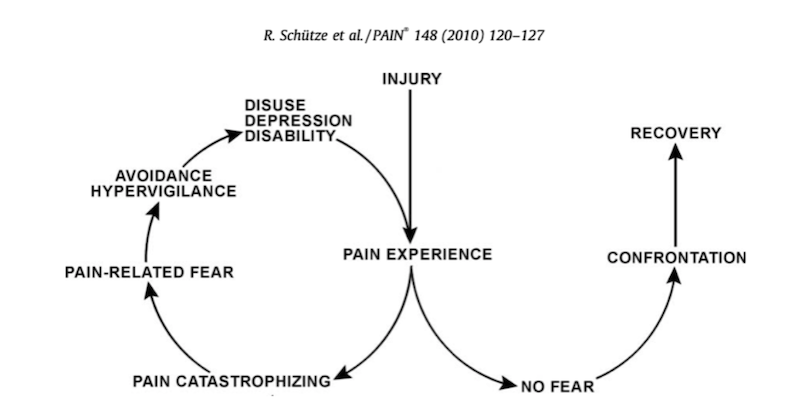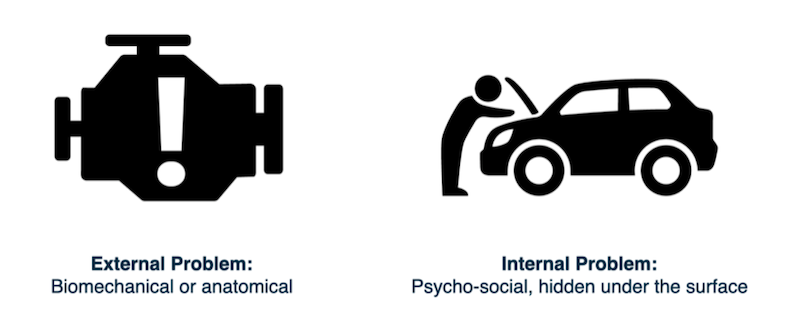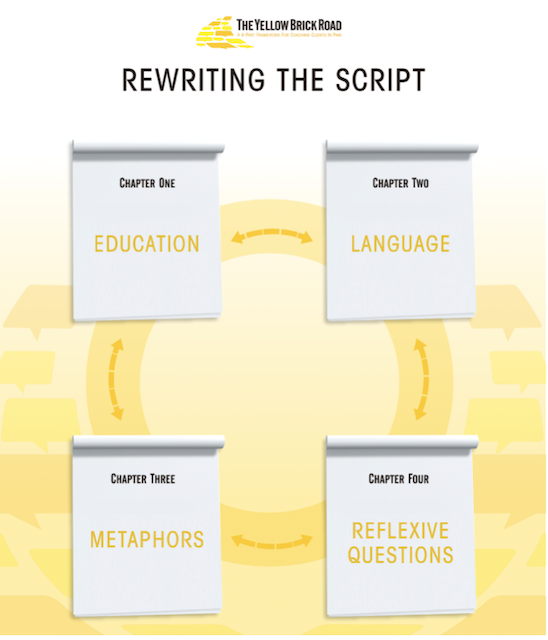Associative Coherence: When 1 + 1 equals 2
The human brain has an immense desire for clarity. And in an effort to find congruence, the nervous system attempts to link all available information together and construct the best plausible story that makes the most intuitive sense; a term which Daniel Kahneman (psychologist, economist & Nobel prize winner) calls ‘Associative Coherence.’
Consider the individual who bends over to pick up their suitcase and then winces in pain, clutching their low back. Known for rapidly jumping to conclusions, the fast-thinking regions of the brain assesses all the ingredients in play and interprets the cause of pain must be the result bending over and reaching for the suitcase. After all, there was no pain before bending over; therefore that ‘must be the cause of back pain’.

And because 1) bending over, 2) suitcase, and 3) back pain makes logical and intuitive sense… these elements formulate an associatively coherent narrative; i.e. bending over equals back pain. When this occurs, examining pain solely in terms of biomechanical constraints is an incomplete analysis. The context of psychological & environmental factors require consideration.
Associative Coherence & Its Psychological Leverage
Imagine avoiding a specific movement such as bending over, or a similar exercise altogether because of the anticipation of pain, rather than in response to it! We’re now talking about avoidance behaviors manifesting from subjective, negative appraisals about pain. These neurosignatures then create a reinforcing feedback loop of pain-related fear and movement hypervigilance.

Additionally, pain-related fear is commonly associated with an upregulation in psycho-physiological activity when situations are appraised as dangerous or threatening. Simply put, the image above puts into context how an individual’s quality of life becomes emotionally, psychologically and environmentally impacted.
So What’s a Movement Professional | Coach to Do?
First and foremost, recognizing that pain problems are complex, highly subjective and embody a multidimensional developmental process magnifies the importance of this distinction; with each clients’ unique pain experience – they are the experts in the psychosocial realm; not you the professional. This cannot be stressed enough!
Therefore, before assessing a client’s movement or designing their corrective program, gaining insight into what the Yellow Brick Road refers to as each client’s ‘internal problem’ is absolutely imperative.

Compared to the ‘external problem’ (the biomechanical or anatomical concerns each client reveals during their consultation), the ‘internal problem(s)’ are the areas in life which hold the most subjective meaning that have been negatively impacted by chronic pain. The internal problems are the emotional, psychological and social/environmental stressors that are 100% unique to the individual.
The Yellow Brick Road calls attention to four separate chapters which work as an interdependent, reinforcing feedback loop designed to help the movement professional | coach gain insights into, & navigate each client’s internal problems.

Collectively, all four chapters focus on upregulating ventral vagal activity of the autonomic nervous system (neuroception of safety), while expanding each client’s cognitive comprehension & self-awareness around their pain experience.
Take the Mystery Out of Consultations
The Yellow Brick Road provides health and exercise professionals an online course that integrates:
- psychological theory,
- pain neuroscience,
- interpersonal relationship-building principles and
- client centered coaching essentials;
So whether you’re a personal trainer, strength & conditioning coach, corrective exercise specialist, health coach, physiotherapist, chiropractor, massage therapist… the entire framework is designed to compliment and fit into your specific area of movement expertise.